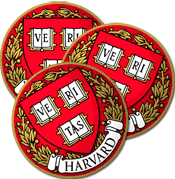I’ve always wondered how one might go about gamifying the workplace, and quite by accident, I discovered a way how. Although not specifically designed for work, HabitRPG is a “free habit building app that treats your life like a game,” and I and a colleague have started using it to gamify part of our work-life.
If you are like me, there’s plenty of things to do at work, so many things that it’s very easy to lose track of what one needs to do, so I take advantage of to-do lists. Every day, I create a to-do list of work that needs to be completed that day, even if it’s a simple thing, such as getting onto my Instant Messenger account or checking my calendar (seriously, as sad as it seems, if I didn’t remind myself to do these things, I wouldn’t do them). And if an item doesn’t get done, it gets pushed to the next day.
HabitRPG transforms to-do lists, as well as your overall habits, into a simple fantasy role-playing game (RPG). Like most of the RPGs in the fantasy genre, you undertake a persona called a “character” who starts out as a lowly adventurer. By completing quests, you gain experience, gold, and other treasures that help your character slowly build him/herself into a hero.
Quests in HabitRPG take on the form of individual habits (such as “isolating oneself for 1hr to get something done”) or individual items on to-do lists. When you complete a habit or an item on a to-do list, you are rewarded with experience, gold, and, if you’re lucky, you might find a piece of treasure you can use later in the game. The more you complete your tasks, the more powerful your character becomes.
And, as in any RPG, your character is in constant peril. Uncompleted tasks deal out damage, and if your character receives too much damage, your character will die. Never fear, your character will be resurrected, but there will be penalties, such as a loss of experience and treasure. This mechanic forces you to stay on top of your to-do lists, for if you let them go, you’ll pay the price.
I’ve started using HabitRPG for all of my to-do lists, including the one I use at work. I won’t claim an increase in productivity or anything like that, but the game does make keeping track of my worklife much more enjoyable than it used to be (and I get rewarded if I do something I normally procrastinate on, such as writing a blog post). Also, there are ways to team up with other players, such as your co-workers, which might make the workplace an even more congenial place, but we haven’t tried those aspects of the game yet.
The rules and mechanics to HabitRPG go much deeper than I have described–tasks can have different difficulty levels, you can collect and feed pets, you cast spells. . . just to name a few of the complexities of the game. But, overall, HabitRPG operates on a simple premise: For every task in life you complete, you and your character become hardier and stronger.


